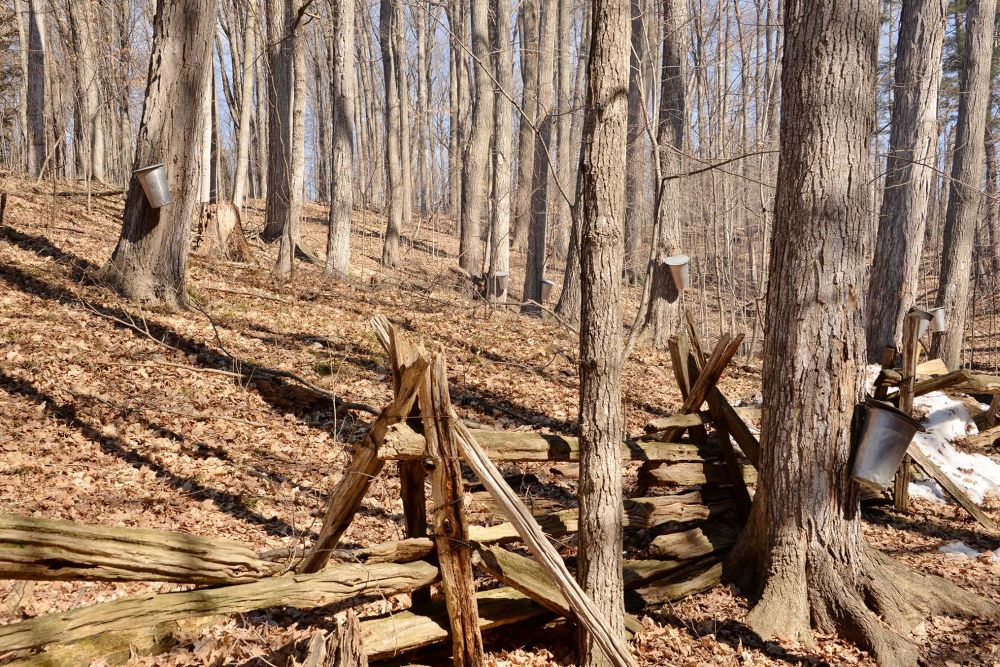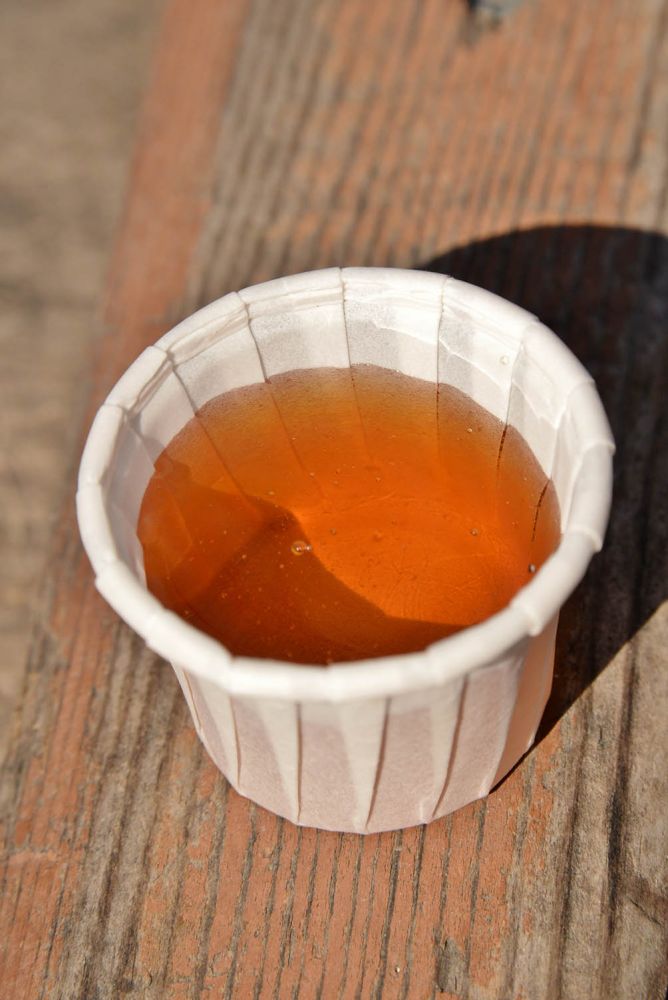After a long, cold winter, I jumped at the chance to volunteer with LEAF for the March Break Maple Tree Tour at the Kortright Centre for Conservation. I thought that it would be a great way to welcome spring and relive some of my favourite childhood memories. We were joined by over 25 participants, mostly young families taking part in their first trip to the sugar bush - a very exciting first.

We began the tour at 10 a.m., led by Sabrina Chiefari, an environmental educator from the Kortright Centre and Robyn Stewart, LEAF’s education and outreach coordinator. The sun was shining and, despite a few cold toes, there was little complaining as our guides brought us along an interactive tour explaining how trees make sap and how people make syrup.

We learned how to identify leafless maple trees by their grayish brown flaky bark and opposite branches; how to measure the approximate age for tapping by measuring the tree’s circumference; and how 40 litres of sap are needed to make just one litre of syrup. “40 litres?” one boy asked. “Wow, that’s a lot.”

It was a lot, especially for communities who had discovered the “sweet water” and collected it using stone tools, birch bark, and wood. European settlers first modernized the collection using wooden pails, then eventually iron and aluminum until finally transitioning to the plastic tubing we use today.

Ontario and Quebec’s maple forests have thrived in large part due to the region’s climate. The fluctuation above and below freezing allows the sap to rise during the day to feed the leaves and descends at night. The sap is collected on its way down as it races back to the roots in the same way we run inside when it gets cold.

The maple syrup produced during March or the “Sugar Maple Moon” provided sustenance for early communities before the spring thaw. Today, we don’t need maple syrup to survive, but it does offer sustenance in other ways. I know I must not be the only Canadian who looks forward to the spring thaw and its rituals of hearty pancake breakfasts and trips to the sugar bush.
Jennifer Gagné has been a LEAF volunteer since 2011 and recently graduated with a Master of Forest Conservation degree from the University of Toronto. She now works in the field of forest health care and although fascinated by forest insects and diseases, she always welcomes the chance to get out and work with community members.
